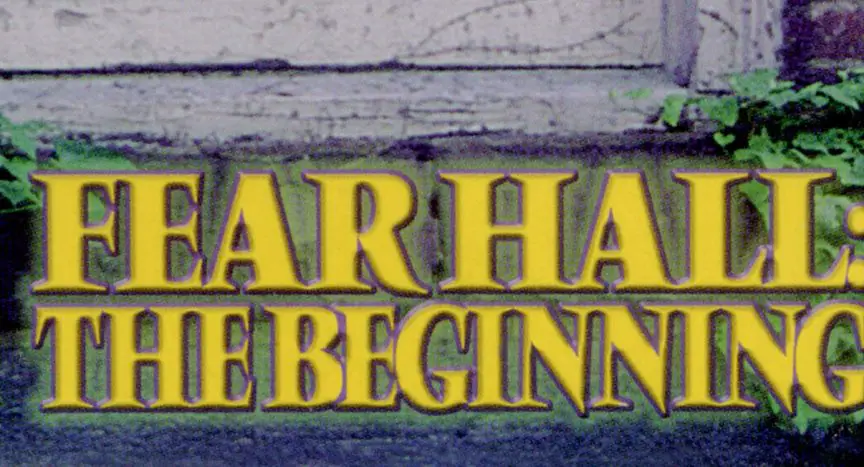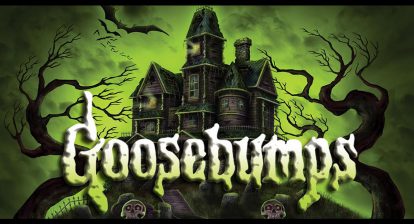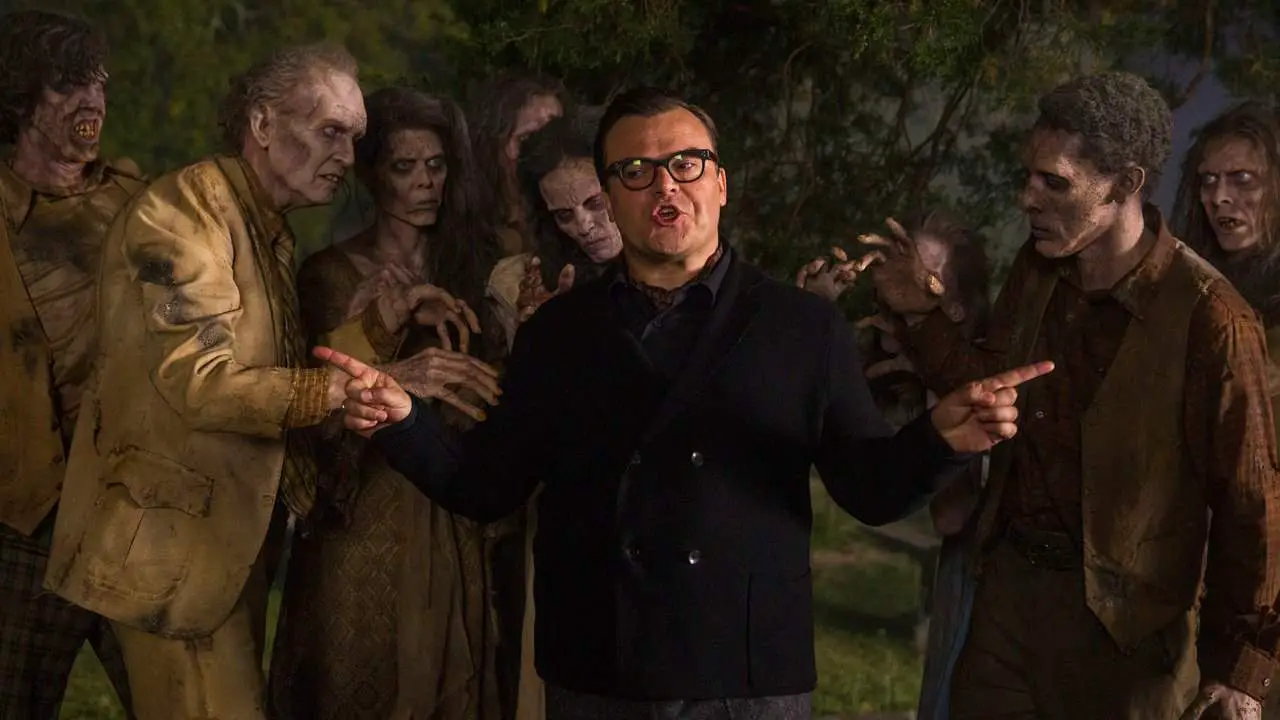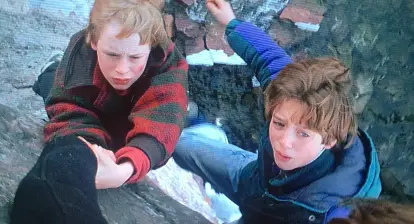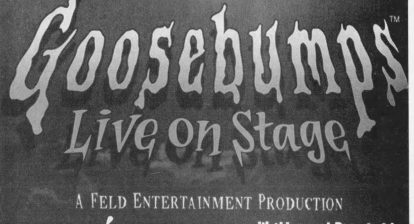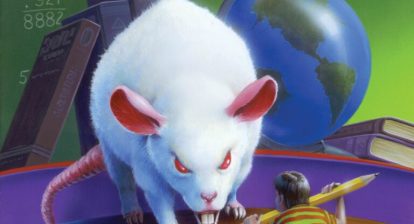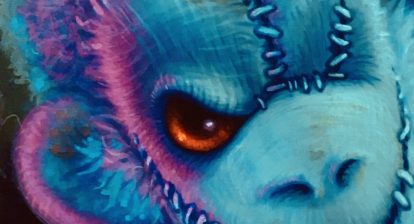Sometimes one reads a story, and it it makes little to no impact. But when given a second chance, something clicks and it ends up becoming a beloved favorite. That was the case with me and my copies of R.L. Stine’s Fear Hall, which have become worn out and sport Stine’s signatures from an autograph session at Books of Wonder in NYC. After barely remembering Fear Hall from middle school, I pulled the two books out during the summer of 2011 and found myself taken with them.
Fear Hall was a two-part story published within the main Fear Street series as The Beginning and The Conclusion. Due to the nature of the first book’s ending, it’s impossible not to spoil what happens. Continue reading at your peril.
50-miles from Shadyside, you’ll find Ivy State University. Ivy State is a small, pleasant college with students from all over America in attendance. There’s just one problem. Ivy State is also home to Fear Hall, a thirteen floor dormitory named after Duncan Fear of the Fear Family.
Naturally, Fear Hall is cursed. There are stories about weird hauntings and creatures lurking within Fear Hall, as well as unexplained deaths and strange disappearances. Fear Hall’s reputation precedes itself, and the college bookstores even sell sweatshirts that say: “I Survive Fear Hall.”
Even though Fear Hall is only half full, thanks to all the rumors, Hope Mathis has to share a room with her three best friends. Her boyfriend, Darryl Hoode, resides on the boys’ floor. Hope is merely thankful to be free of her abusive mother, and except for those nosey bitches living across the hall, Hope and her friends are one big, happy family. Too bad Darryl ruined everything by killing a guy in a jealous rage.
The Beginning starts with Hope’s boyfriend telling her he “carved” a guy he saw her going out with that very night. Only the guy in question was going out with Hope’s roommate Angel, who borrowed one of Hope’s outfits for the date. Now, Hope’s besties Angel, Jasmine, and Eden have to keep quiet to protect Darryl at Hope’s behest. If only Darryl would stop killing people.
Fear Street Novels that Need to be Adapted for the Big Screen

The Conclusion shows Hope and her roommates on the run after Darryl’s crimes are exposed. The girls hide in an abandoned sorority while Darryl murders Hope’s enemies. Hope tries ditching Darryl for good by dating a boy named Chris. Trouble is, Chris thinks Hope’s named “Karen” and doesn’t suspect her involvement in the campus killings.

Stine switches perspective multiple times throughout both books, but Hope Mathis is our main character. From the start, Hope has a very poor opinion of her self but speaks highly of her best friends. There’s
- Angel, the sexy one. A thin, slinky blonde who enjoys dating lots of guys.
- Jasmine, the smart one. A soft spoken wisp of a girl who rarely talks about herself.
- And Eden, the snarky one. A grungy brunette with a sense of humor and a fondness for flannel and chinos.
The Beginning is split between Hope’s narration and her besties, showing them dealing with Darryl’s crime and his constant harassment. None of Hope’s friends are comfortable protecting Darryl as he stalks them, threatening them into silence while promising he’ll kill again. Darryl makes good on his threats when he interrupts Eden’s date and viciously beats the guy to death with a golf putter.
In-between Darryl’s abuse, Stine sheds light on Hope’s traumatic childhood and her open dislike of her neighbors “The Three M’s.” Hope’s roommates often find themselves listening to stories of her horrid mother, who spent Hope’s entire life belittling her for being “a little chubby.” There are implications that Hope’s abuse stems from the complete absence of her father, who is simply a void in Hope’s life.
Stine’s take on abusive parenting is downright unsettling, with Hope’s mother Helayne, whom derisively nicknamed her “Buttertubs.” While Stine is well known for incompetent and absent parents in his books but when he deliberately writes them as abusive, it’s horrifying. Once, when Hope was a child and invited some girls from school to her house for ice cream, Helayne went ballistic. Hope describes how her mother started screaming at everyone, before forcing Hope to eat the ice cream she’d given her friends. Helayne capped it off by making the kids watch as she shoved Hope’s face into the ice cream carton, making her daughter eat the rest like a dog.
Likewise, while Stine is also known for creating love interests who’re accidentally assholes, Hope’s boyfriend Darryl is well beyond the usual brand of awful. Hope refuses to break up with Darryl because he “saved her” from a bad relationship in high school. Angel, Eden, and Jasmine know Darryl’s bad news. He treats Hope just as badly as her mother did. Despite Hope’s insistence Darryl can be sweet and kind, he’s possessive, domineering, and all too eager to mock Hope’s figure when he’s especially angry.
As a villain, Darryl’s downright despicable and cruel. He’s not afraid to get his hands dirty, shown by his “carving” of Angel’s date. The poor guy ends up losing an ear and having his scalp ripped off.
Darryl’s viciousness carries over into The Conclusion, where he kills one person via a full body chlorine overdose and another by using a laundry press. Stine describes, in detail, how the first victim writhes in agony while her skin below her neck blisters and peels off. During the second killing, Stine focuses on Darryl repeating to himself how much he loves Hope as he brings the press down again and again and again…
Outside of her mother and Darryl, Hope’s biggest obstacle are The Three M’s, three girls who live across from Hope and her friends in Fear Hall.
- Melanie, the de facto leader. Once accused Hope of stealing a sweater.
- Margie, from Boston. Loves debating about everything. Works at a dry cleaner.
- Mary, from the South. On the swim team with Melanie.
Because the Three M’s all attended private schools, Hope thinks they look down on public school kids like her and her friends. Throughout The Beginning, the Three M’s are frequently shown spying on Hope’s friends. In fact, Mary’s the one who discovers the remains of Darry’s first kill and alerts the entirety of Fear Hall. Since she lives on the thirteenth floor, Stine unintentionally implies Mary screamed the entire way up as she let everyone know about the dead body. Hope fears they suspect she has some connection to Darryl’s murders and might ruin everything.
The thing is, Hope’s fears are semi-justified because, by the end of The Beginning, the Three M’s rat Hope out to the police.
And by rat out, I mean they explain to the police that there’s no way a girl named “Eden Leary” could’ve called them from Hope’s room because Hope lives by herself. Hope doesn’t have roommates. And there’s no boys floor in Fear Hall.
That’s the bombshell. The Beginning ends with us learning Hope’s best friends and boyfriend are figments of her imagination. They’re split personalities, created thanks to the abuse and isolation Hope’s mother put her through. This revelation completely changes things, putting into perspective the “spying” of Hope’s neighbors as genuine concern for her odd behavior.
The reveal is foreshadowed all throughout The Beginning. Hope alluding to, but not outright mentioning, her “friends” while talking with Melanie is met with a confused expression. Likewise, there’s “Eden” mentioning how “they’ll all come” when Melanie states a planned meeting to discuss upping security at Fear Hall. When “Angel” (who only gets one chapter to herself) is accosted by “Darryl” on a date, Angel’s guy friend doesn’t know what’s happening but never asks Angel directly who this other guy is. It gets especially blatant when Melanie calls Eden “Hope,” earning the response “It’s ME, guys, I’m just wearing Hope’s clothes!”
We need to discuss that Stine’s take on mental health and multiple identities isn’t exactly nuanced. Fear Hall frequently juggles the idea that Darryl and Hope’s roommates are either imaginary friends or alternate personas. The personalities suffer memory blackouts whenever one is dominant. The Jasmine personality is fired from her job not just because she didn’t show up the previous evening, but because she has no memory at all of where she’d been. The Eden personality shows up for a class where Hope’s name is on the registry, despite Eden claiming she’s attended every session since the semester began.
Hope is one of Stine’s most tragic protagonists, thanks to being both the hero and technically the villain. It’s hard not to feel sorry for her, thanks to her oppressive childhood. Helayne not only shamed Hope for her body image, she actively did her best to stop Hope from ever making friends and tried to drive away Hope’s first boyfriend, Mark. Hope recalls her mother deliberately forcing her to wear clothing that was too small for her to in an attempt to get Hope to lose weight. Helayne even went as far as handcuffing herself to Hope the night of a school dance, and then locked Hope in her room for weeks. When Hope later found a note in her locker saying Mark dated her because he lost a bet, it’s subtly implied Helayne actually wrote the message when her efforts failed to scare Mark off.
In a way, Hope’s besties were necessary for her to survive with her mother, but Darryl’s emergence is when things turned violent. After her “break up” with Mark, Darryl appeared to Hope and helped avenge her by repeatedly running Mark down with a car. It only goes to show Darryl was always murderous and Hope overlooked it because it was aimed at someone she disliked.
There comes a time when a person stops being a victim, and Stine proves Hope is the architect of her own unhappiness. While she may have escaped her mother by getting to Ivy State, Hope’s dependency on her “friends” ruins her life and any chance to grow. The irony being Hope’s roommates are better friends than she deserves. The Angel, Eden, and Jasmine personas all show levels of common sense Hope lacks, pressing on her to realize Darryl is toxic. Hope even goes as far as hallucinating a sequence where she bashes Eden in the head and ties her up in her closet to stop Eden from reporting Darryl to the cops.
Stine also shows us how Angel, Eden, and Jasmine all lead more fulfilling lives than Hope does. Angel is unabashed about her interests in dating guys. Eden is comfortable in her own skin and contemplates pursuing a relationship with a guy who is nothing like Darryl. Jasmine pushes herself out of her shell by working as a waitress so she has to associate with people. Hope’s besties are all facets of an idealized self that could’ve been hers. They argue that she has to let go of Darryl for her own sake as much as theirs, and simply want her to be happy.
Darryl’s presence is the internalized self-hatred and paranoia Hope developed thanks to her mother and her supposed fallout with Mark. Hope shows she’s just as capable of violence, even without Darryl at the reigns, when she viciously destroys a framed photograph of a woman who resembles her mother. Stine ends that chapter with Hope screaming for her mother to stop following her, as she rips the picture apart with her bare hands and blood flows from the destroyed remnants of her fingernails.
That very same paranoia becomes evident when Stine gives one of the Three M’s a chapter in The Conclusion. Outside of Hope’s perspective, we see Melanie, Mary, and Margie are just ordinary girls with a friendship much healthier than Hope’s. They’re exactly the kind of girls Hope could’ve used as friends, and if she hadn’t been so suspicious.
Speaking of perspective, the biggest issue with The Conclusion is how the focus is spent mostly on Hope, Darryl, and new character, Chris. There’s no spotlight given to how Hope’s other personalities need to adjust to being on the run, and the Three M’s only get a single chapter. Chris is thrown into the book by its midway point as a potential love interest for Hope, but doesn’t really do much, aside from being an outsider. Chris is more like a living morsel of, well, hope, being dangled in front of Hope when her life spirals out of control. If there’d been more time, Chris could’ve been fleshed out as a character, but introduced so late in the story he doesn’t offer anything really substantial.
There’s also some subtle implications throughout The Conclusion that a fifth personality has manifested. When Hope finds the sorority house trashed and a note saying she can’t escape, she fears someone has found her out or it’s more of Darryl’s bullshit. Darryl avoids answering the question.
Fear Hall ultimately stands out as one of the darkest entries in the Fear Street franchise. Not just in terms of violence, but also despair. Hope is one of Stine’s more complexing lead characters, even if the take on mental health and violence = insanity could have used some tweaking. What Stine manages to bring to her besties/alternate personalities makes you wish they were, indeed, separate characters and not only aspects of Hope’s mind. Meanwhile, Darryl is a genuinely loathsome and frightening villain. Fear Hall may not be a perfect story, but it’s one worth talking about.
